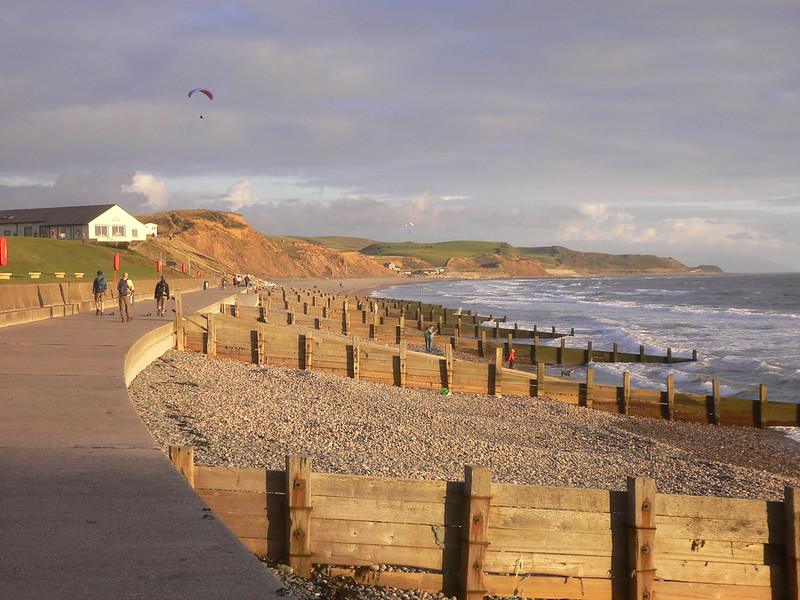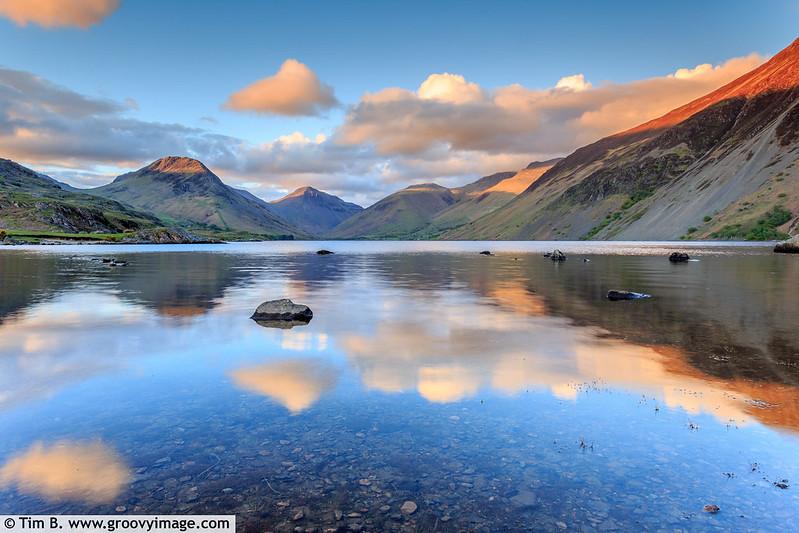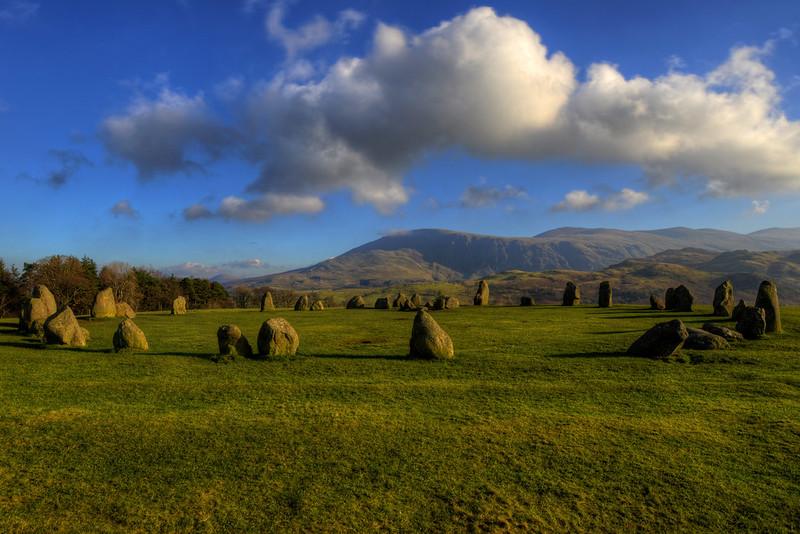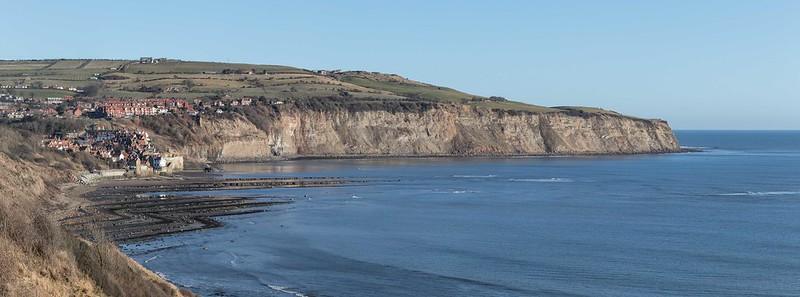The Coast to Coast Walk in Cumbria is a breathtaking journey that takes adventurers across some of the most stunning landscapes in England. Spanning approximately 192 miles from St. Bees on the west coast to Robin Hood’s Bay on the east, this iconic trail offers a unique blend of natural beauty, rich history, and diverse wildlife. Whether you are an experienced hiker or a casual walker, the Coast to Coast Walk promises an unforgettable experience that will leave you with lasting memories.
Experience the Majestic Landscapes of Cumbria’s Coast to Coast

As you embark on the Coast to Coast Walk, you will be greeted by the majestic landscapes that define the Cumbrian region. The trail meanders through the breathtaking Lake District National Park, where rolling hills, shimmering lakes, and rugged mountains create a picturesque backdrop. Each step reveals a new vista, from the tranquil shores of Wastwater to the dramatic peaks of Scafell Pike, the highest mountain in England. The changing scenery, with its vibrant colours and diverse terrains, captivates the senses and inspires a deep appreciation for nature.
The walk also takes you through the enchanting valleys of the Yorkshire Dales, where limestone cliffs and lush green pastures create a serene environment. The contrast between the ruggedness of the Lake District and the gentle beauty of the Dales is a testament to the diverse geography of the region. As you traverse the trail, you will encounter charming villages and quaint farms, each with its unique character and charm. The landscapes are not just a feast for the eyes; they also provide a sense of peace and tranquillity that is hard to find in our fast-paced world.

In addition to the natural beauty, the Coast to Coast Walk offers a chance to experience the changing seasons. Each time of year brings its unique charm, from the vibrant wildflowers of spring to the golden hues of autumn. Winter walks, though less common, reveal a magical landscape dusted with snow, transforming the familiar trails into a winter wonderland. No matter when you choose to embark on this journey, the landscapes of Cumbria will leave an indelible mark on your heart.
The Coast to Coast Walk is not just a physical challenge; it is an opportunity for reflection and connection with the environment. As you walk, take the time to pause and soak in the beauty around you. Listen to the rustling leaves, the gentle flow of streams, and the calls of birds overhead. This immersive experience allows you to reconnect with nature and appreciate the simple joys of life, making the journey as rewarding as the destination.
Uncover the Rich History Along the Walking Trail
The Coast to Coast Walk is steeped in history, with each step revealing stories of the past. As you traverse the trail, you will encounter ancient stone circles, remnants of Roman roads, and historic castles that speak to the rich heritage of the region. The walk begins at St. Bees, where the 12th-century St. Bees Priory stands as a testament to the area’s ecclesiastical history. This charming village, with its sandy beach and dramatic cliffs, sets the stage for a journey through time.

As you make your way through the Lake District, you will discover the influence of Romantic poets, such as William Wordsworth and Samuel Taylor Coleridge, who found inspiration in the region’s natural beauty. Their legacy is preserved in the many literary landmarks scattered along the trail, including Dove Cottage in Grasmere, where Wordsworth penned some of his most famous works. Walking in their footsteps allows you to appreciate the profound connection between nature and creativity that has shaped the cultural landscape of Cumbria.
The trail also takes you through the historic market towns of Kirkby Stephen and Richmond, where you can explore charming streets lined with traditional shops and cafes. These towns are rich in history, with buildings that date back centuries, offering a glimpse into the daily lives of those who have walked these paths before. The local museums and heritage centres provide further insight into the region’s past, showcasing artefacts and stories that highlight the resilience and spirit of the Cumbrian people.

Finally, the journey culminates at Robin Hood’s Bay, a picturesque fishing village with a history that dates back to the 16th century. The village’s narrow, winding streets and quaint cottages evoke a sense of nostalgia, while the tales of smugglers and pirates add an air of intrigue. As you reach the end of the Coast to Coast Walk, take a moment to reflect on the rich tapestry of history that has unfolded along the trail, and consider how your journey has become a part of this enduring narrative.
Embrace the Wildlife and Nature of the Cumbrian Countryside
The Coast to Coast Walk is not only a visual feast but also a sanctuary for wildlife enthusiasts. The diverse habitats along the trail support a rich array of flora and fauna, making it a prime location for nature lovers. From the rugged mountains of the Lake District to the rolling hills of the Yorkshire Dales, each ecosystem is home to unique species that thrive in their natural environments. Keep your eyes peeled for red squirrels, otters, and a variety of bird species, including the majestic peregrine falcon.

As you walk through the lush woodlands and open moorlands, you will encounter a stunning variety of wildflowers that paint the landscape with vibrant colours. In spring and summer, the meadows come alive with blooms such as bluebells, orchids, and buttercups, creating a picturesque setting that is perfect for photography and contemplation. The changing seasons also bring different wildlife sightings, from the playful lambs in the spring to the migrating birds in the autumn, ensuring that each visit offers something new and exciting.
The trail also provides opportunities for more immersive experiences with nature. Many sections of the walk pass through designated nature reserves and national parks, where you can learn about conservation efforts and the importance of preserving these precious ecosystems. Guided walks and educational programs are often available, allowing you to deepen your understanding of the local wildlife and the delicate balance of nature. Engaging with the environment in this way fosters a sense of stewardship and responsibility towards the natural world.
The Coast to Coast Walk encourages a deeper connection with nature, inviting you to slow down and appreciate the beauty that surrounds you. Take the time to listen to the sounds of the countryside the rustling of leaves, the chirping of birds, and the gentle flow of streams. These moments of mindfulness can enhance your experience and create lasting memories of your journey through the Cumbrian countryside. Embrace the wildlife and nature along the trail, and let it inspire you to cherish and protect the natural world.

Tips for an Unforgettable Journey on the Coast to Coast Walk
Embarking on the Coast to Coast Walk requires careful planning to ensure a smooth and enjoyable experience. First and foremost, it is essential to choose the right time of year for your adventure. The best months for walking are typically late spring to early autumn when the weather is milder and the days are longer. However, be prepared for the unpredictable British weather by packing appropriate clothing and gear, including waterproof jackets, sturdy walking boots, and layers to accommodate changing temperatures.
Navigating the trail is another important aspect of your journey. While the Coast to Coast Walk is well-marked, having a reliable map and guidebook is crucial for staying on track. Familiarise yourself with the route and key landmarks before you set off, and consider downloading a GPS app for added convenience. Additionally, plan your daily walking distances according to your fitness level and experience, allowing for rest breaks and time to explore the beautiful surroundings.
Accommodation options along the trail range from cosy bed and breakfasts to campsites, providing a variety of choices to suit your preferences. It is advisable to book your accommodations in advance, especially during peak walking season, to ensure you have a comfortable place to rest each night. Many walkers also carry lightweight camping gear for a more adventurous experience, allowing for flexibility in their itinerary and the opportunity to immerse themselves in nature.

Finally, don’t forget to take the time to savour the journey. The Coast to Coast Walk is not just about reaching the destination but about the experiences and connections you make along the way. Engage with fellow walkers, chat with locals, and indulge in the delicious regional cuisine at pubs and restaurants. Capture the moments through photographs and journaling, and allow yourself to be fully present in the beauty of the Cumbrian landscape. With the right preparation and mindset, your journey along the Coast to Coast Walk will be an unforgettable adventure.
The Coast to Coast Walk in Cumbria is a remarkable journey that offers a unique blend of stunning landscapes, rich history, and vibrant wildlife. Whether you seek adventure, tranquillity, or a deeper connection with nature, this iconic trail has something for everyone. By embracing the beauty of the Cumbrian countryside and preparing thoughtfully for your journey, you can create lasting memories that will inspire you long after you have returned home. So lace up your boots, pack your bags, and set out on an adventure that promises to be as enriching as it is exhilarating.
Cumbria’s Coast to Coast Walk FAQs
What is the Coast to Coast Walk?
The Coast to Coast Walk is a long-distance trail that stretches approximately 190 miles (306 km) across Northern England, from St Bees on the Irish Sea coast in Cumbria to Robin Hood’s Bay on the North Sea coast in North Yorkshire. It was originally devised by Alfred Wainwright in 1973.
How long does it take to complete the Coast to Coast Walk?
The walk typically takes between 12 to 16 days to complete, depending on the pace of the walker and the specific route taken. Some may choose to extend or shorten the duration based on their fitness level and the amount of sightseeing.
What are the best times of year to walk the Coast to Coast?
The best time to walk the Coast to Coast is between May and September when the weather is generally milder, and the days are longer. Spring and early autumn offer pleasant conditions, though walkers should still be prepared for unpredictable weather.
Is the Coast to Coast Walk suitable for beginners?
The Coast to Coast Walk is moderately challenging, with varied terrain including mountains, valleys, and moorlands. It is recommended for walkers with some experience in long-distance hiking and good physical fitness. Beginners should consider starting with shorter sections or preparing thoroughly with training walks.
What kind of terrain can I expect on the Coast to Coast Walk?
The terrain is diverse, ranging from steep mountain paths in the Lake District to rolling hills and valleys in the Yorkshire Dales and North York Moors. Walkers will encounter rocky paths, grassy tracks, moorland, and occasionally, paved roads and lanes through villages.
Are there accommodation options along the Coast to Coast Walk?
Yes, there are various accommodation options along the route, including hotels, bed and breakfasts, inns, hostels, and campsites. Accommodation can be found in most of the villages along the trail, and it’s advisable to book in advance, especially during peak season.
What should I pack for the Coast to Coast Walk?
Essential items include sturdy walking boots, waterproof clothing, a comfortable backpack, a map and compass (or GPS), and plenty of snacks and water. If camping, bring a lightweight tent, sleeping bag, and cooking equipment. A guidebook is also helpful for navigation and local information.
What are the transportation options to reach the start and finish of the Coast to Coast Walk?
The starting point, St Bees, is accessible by train from Carlisle or Lancaster, with connections from major cities. The endpoint, Robin Hood’s Bay, is near Whitby, from where you can take buses to larger towns or arrange private transport. Some walkers also use taxi services to reach and depart from these locations.
Is there mobile phone coverage along the Coast to Coast Walk?
Mobile phone coverage varies along the route. While coverage is generally good near towns and villages, it can be patchy or nonexistent in remote or mountainous areas, so it’s important to be prepared for stretches without a signal.



